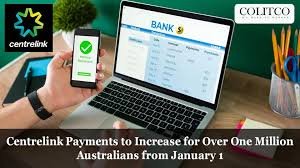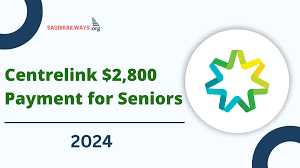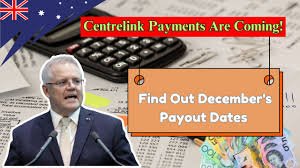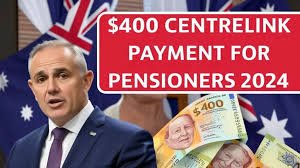Introduction of Centrelink Payments:

Centrelink payments are a vital component of Australia’s social security system, designed to provide financial support to individuals and families facing various circumstances. Whether you’re navigating unemployment, disability, parenting responsibilities, or retirement, understanding Centrelink payments is crucial for making the most of this support. This guide will cover everything you need to know about Centrelink payments, eligibility criteria, application processes, and tips for managing your benefits effectively.
What Are Centrelink Payments?
Centrelink is an Australian government service that provides financial support and social services to eligible residents. Administered by Services Australia, Centrelink offers various payments tailored to different life situations, including:
- Income support payments for those unable to work or experiencing financial hardship.
- Family assistance payments to help with the cost of raising children.
- Disability and care-related payments for individuals with disabilities and their carers.
- Retirement-related payments for older Australians transitioning out of the workforce.
Types of Centrelink Payments

1. JobSeeker Payment
The JobSeeker Payment is available for individuals aged 22 and older who are unemployed and actively seeking work. To qualify, you must:
- Be looking for suitable work.
- Meet income and asset limits.
- Participate in employment programs, if required.
2. Age Pension
The Age Pension supports Australians over the age of 66 and 6 months (age increases gradually depending on birthdate) who meet residency and income tests. This payment assists with living expenses for retirees without sufficient superannuation or savings.
3. Youth Allowance
Youth Allowance is designed for individuals aged 16–24 who are studying, undertaking an apprenticeship, or seeking work. Eligibility is based on age, income, and living arrangements.
4. Parenting Payment
Parenting Payment provides financial support to eligible parents or guardians raising children under the age of 8 (if single) or 6 (if partnered).
5. Disability Support Pension (DSP)
The DSP is for individuals with a permanent physical, intellectual, or psychiatric condition that prevents them from working. Eligibility depends on medical assessments and residency status.
6. Carer Payment and Allowance
The Carer Payment and Carer Allowance support individuals who provide full-time care for someone with a severe disability, medical condition, or frailty due to age.
7. Family Tax Benefit (FTB)
Family Tax Benefit is divided into two parts:
- FTB Part A: Helps with the cost of raising children.
- FTB Part B: Supports single-income families or single parents.
8. Austudy
Austudy provides financial assistance to Australians aged 25 and over who are studying full-time or completing an apprenticeship.
9. Crisis Payment
This is a one-off payment for individuals facing extreme circumstances, such as domestic violence, natural disasters, or homelessness.
Eligibility Criteria for Centrelink Payments
Eligibility varies depending on the type of payment. However, general criteria include:
- Residency Requirements: Most payments require you to be an Australian citizen, permanent resident, or hold a special category visa.
- Income and Asset Tests: Your earnings and owned assets must fall below specific thresholds to qualify for many payments.
- Age Limits: Certain payments, like Youth Allowance or the Age Pension, have age-specific eligibility rules.
- Activity Tests: Some payments, such as JobSeeker or Parenting Payment, require recipients to participate in job-seeking or other approved activities.
How to Apply for Centrelink Payments
1. Prepare Necessary Documents
Before applying, gather key documents:
- Proof of identity (e.g., passport, birth certificate).
- Tax file number.
- Bank account details.
- Income and asset information.
2. Create a MyGov Account
MyGov is the central platform for accessing Centrelink services. Link your Centrelink account to MyGov for a streamlined application process.
3. Submit Your Application
Use the Centrelink online portal or visit a local office to lodge your application. Ensure all details and supporting documents are accurate to avoid delays.
4. Wait for Assessment
Centrelink will assess your eligibility. You may be contacted for additional information or invited to attend an interview.
5. Receive Notification
Once approved, you’ll receive a notification outlining the amount, payment schedule, and any conditions.
Tips for Managing Your Centrelink Payments
- Report Changes Promptly: Inform Centrelink of any changes in income, assets, or personal circumstances to avoid overpayment or penalties.
- Utilize Online Services: Use the MyGov portal for reporting, updating details, and checking payment status.
- Understand Mutual Obligations: Comply with activity requirements, such as attending job interviews or training programs.
- Plan a Budget: Use tools like the Centrelink payment estimator to plan your budget effectively.

Common Questions About Centrelink Payments
1. Can I Receive More Than One Payment?
Yes, in some cases. For instance, you may qualify for both Family Tax Benefit and a Carer Allowance. However, most payments cannot be claimed simultaneously.
2. What If My Application Is Denied?
If your application is denied, you can request a review or appeal the decision through the Administrative Appeals Tribunal (AAT).
3. How Long Does It Take to Receive Payments?
Processing times vary, but most applications are assessed within a few weeks. Emergency payments, like the Crisis Payment, are processed more quickly.
Recent Updates to Centrelink Payments
Government policies regarding Centrelink payments frequently change. Recent updates may include:
- Increases in Payment Rates: Adjustments to reflect inflation and cost of living.
- Changes in Eligibility Criteria: New residency or income thresholds.
- Additional Support for Specific Groups: Extra support during emergencies, such as bushfires or pandemics.
Centrelink Fraud and Compliance
1. What Constitutes Fraud?
Centrelink fraud occurs when individuals deliberately provide false or misleading information to receive payments they aren’t entitled to. Examples include underreporting income or claiming payments while ineligible.
2. Consequences of Fraud
Penalties include repayment of funds, fines, and possible legal action. Centrelink uses data-matching and compliance checks to identify discrepancies.
Support Services for Centrelink Recipients
1. Financial Counselling
Free counselling services can help you manage your finances and understand your entitlements better.
2. Advocacy Services
Advocacy groups assist with disputes, appeals, and navigating the Centrelink system.
3. Centrelink Customer Service
Reach out to Centrelink via phone or at local offices for assistance with applications or reporting requirements.
Centrelink Payment Myths Debunked
Myth 1: Centrelink Payments Are Only for the Unemployed
Centrelink supports various groups, including students, retirees, parents, and carers.

Myth 2: Applying for Centrelink Is Too Complicated
While the process can seem daunting, resources like MyGov and customer service representatives simplify applications.
Conclusion
Centrelink payments provide essential financial support to millions of Australians. By understanding the types of payments available, eligibility requirements, and application processes, you can maximize your benefits and manage them effectively. Stay informed about updates and changes to ensure continued support in times of need.
